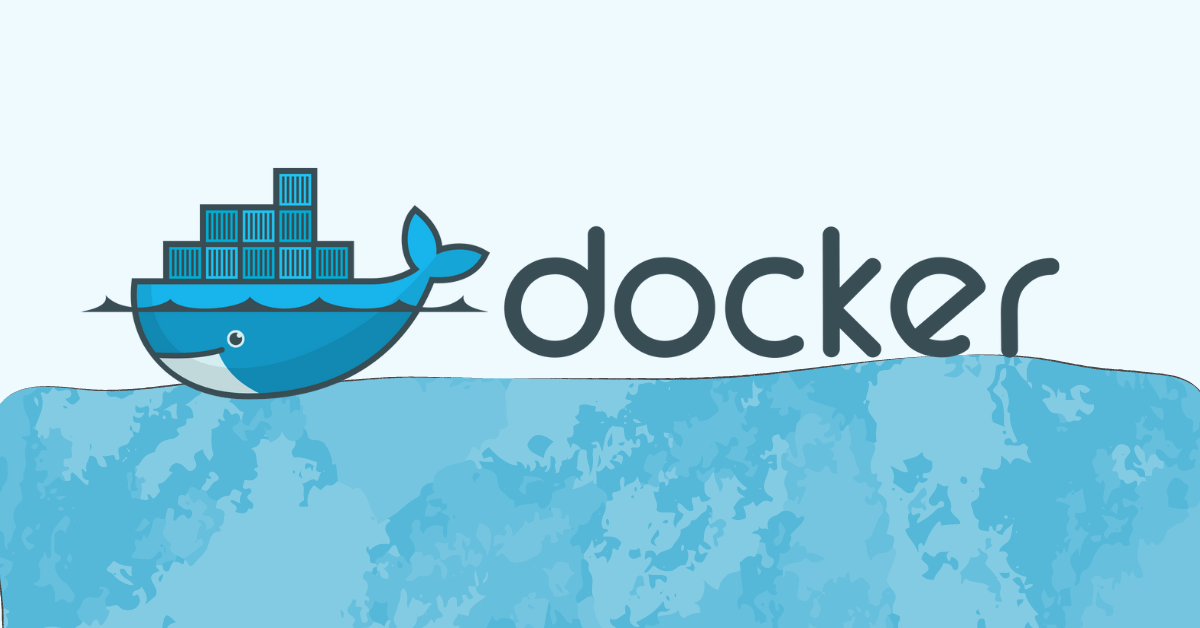In the fast-evolving landscape of software development, Docker has emerged as a transformative tool that reshapes how developers build, test, and deploy applications. By leveraging containerization, Docker introduces a new paradigm that enhances efficiency, collaboration, and scalability. This article delves into why Docker is considered a game changer for developers, exploring its origins, core concepts, benefits, and future trends.
Understanding Docker: A Brief Overview
The Origins of Docker
In 2013, Docker introduced containerization to the mainstream, fundamentally altering how applications are developed and deployed. Docker’s lightweight, portable containers encapsulate an application and its dependencies, ensuring consistent behavior across different environments. This innovation addressed many pain points associated with traditional virtualization, such as bloated resource consumption and complex dependency management. By offering a simple yet powerful way to package and distribute applications, Docker has become a cornerstone of modern DevOps practices.
What is Docker?
Docker is an open-source platform designed to automate the deployment of applications inside lightweight, portable containers. These containers encapsulate everything an application needs to run, including code, runtime, system tools, and libraries, ensuring consistency from development to production.
Components of Docker:
The following are the components of a Docker:
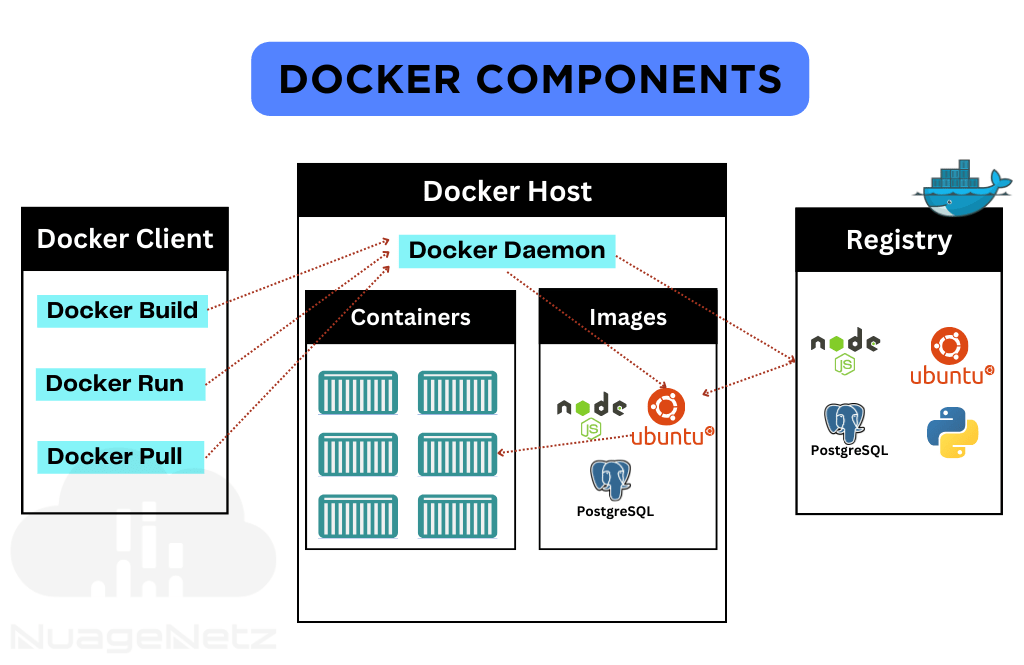
Docker Client
This is the command-line interface (CLI) that allows users to interact with the Docker Daemon. Commands such as docker run, docker build, and docker pull are executed through the Docker Client.
Docker Host
The Docker host provides a complete environment to execute and run applications. It includes Docker daemon, Images, Containers, Networks, and Storage.
Docker Daemon
Docker Daemon: Also known as dockerd, the Docker Daemon runs on the host machine and manages Docker objects like images, containers, networks, and volumes. It listens for Docker API requests and processes them.
Docker Images
Docker Images are read-only templates used to create containers. An image includes everything needed to run an application: code, runtime, libraries, environment variables, and configuration files. Images are built from a Dockerfile, which is a script containing a series of instructions on how to build the image.
- Dockerfile: A text file that contains the commands to assemble a Docker image. Each command in a Dockerfile creates a new layer in the image, contributing to its final form.
Docker Containers
Docker Containers are executable instances of Docker images. Containers are lightweight and portable, providing isolated environments where applications can run. Unlike virtual machines, containers share the host system’s kernel and resources, making them more efficient.
- Isolation: Containers use namespaces and control groups (cgroups) to provide isolation. Namespaces ensure that a container sees its own separate instance of the global system resources, while cgroups limit the resources a container can use.
Docker Networking
Docker Networking allows containers to communicate with each other and with external systems. Docker provides several types of networks:
Bridge Network: The default network for standalone containers, allowing containers on the same host to communicate.
Host Network: Removes network isolation between the container and the Docker host, allowing the container to use the host’s network stack directly.
Overlay Network: Enables communication between containers across multiple Docker hosts, typically used in Docker Swarm.
Macvlan Network: Assigns a MAC address to each container, making them appear as physical devices on the network.
Docker Storage
Data Volumes:
- Data Volumes create persistent storage.
- Volumes can be renamed and listed, and you can list the containers associated with a volume.
- These volumes exist on the host filesystem outside the container’s copy-on-write mechanism, offering efficiency.
Data-Volume Containers:
- A dedicated container hosts a volume.
- This volume can be mounted to other containers.
- The volume container is independent of application containers, allowing sharing across multiple containers.
Bind Mounts:
- Bind Mounts allow you to mount any directory from the host machine into a container.
- Unlike Data Volumes, which reside within the Docker volumes folder, Bind Mounts can use any directory on the host as a volume source.
Docker Registries
Docker registries are essential services for storing and retrieving Docker images. They host repositories that store multiple Docker images, facilitating easy access and distribution across environments. Public registries like Docker Hub and Docker Cloud provide a vast collection of publicly available images, while private registries offer secure repositories for proprietary or sensitive applications. Organizations often set up their own private registries to manage and control access to custom-built images. These registries enable efficient deployment pipelines by ensuring that Docker images can be easily pushed, pulled, and managed with versioning and access control mechanisms in place.
Benefits of Docker:
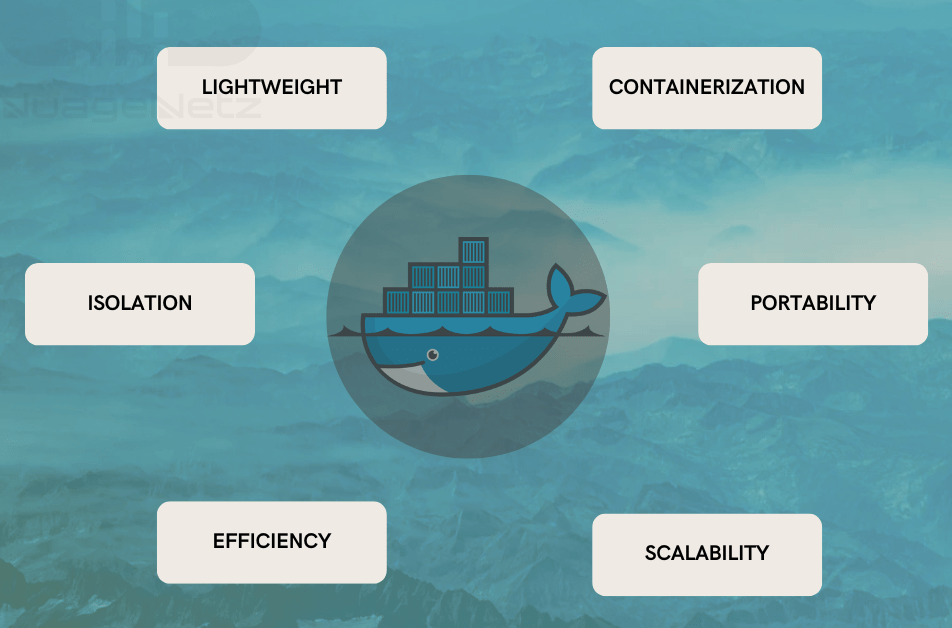
Containerization: Docker containers encapsulate everything an application needs to run, including the code, runtime, libraries, and system tools. This encapsulation ensures that the application runs the same regardless of where it is deployed, eliminating the “it works on my machine” problem.
Lightweight and Fast: Containers are more lightweight than traditional virtual machines (VMs). They share the host system’s kernel and resources, which reduces overhead and allows for faster start-up times and efficient resource usage.
Portability: Docker containers can run on any machine that has the Docker runtime installed, making it easy to move applications between different environments, such as from a developer’s laptop to a testing server, and then to a production environment.
Isolation: Containers provide a level of isolation, ensuring that applications do not interfere with each other. This isolation enhances security and stability, as each container operates independently.
Docker Hub: Docker Hub is a cloud-based repository where users can find and share Docker images. It hosts a wide range of pre-built images, allowing developers to quickly start new projects without having to build images from scratch.
What is containerization?
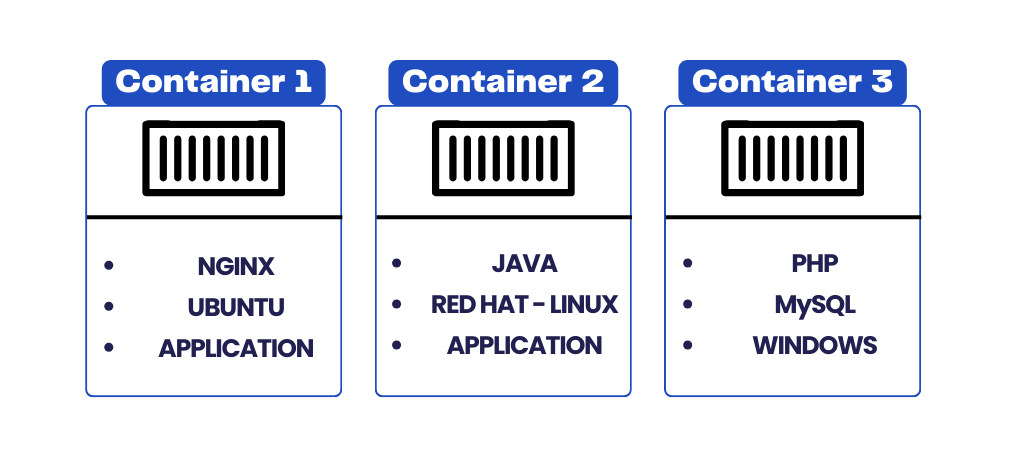
Containerization is a lightweight form of virtualization that involves encapsulating an application and its dependencies into a single, portable unit called a container. This container includes everything the application needs to run, such as the code, runtime, libraries, and system tools. Containers are designed to be consistent across different environments, ensuring that an application runs identically regardless of where it is deployed.
Difference between Virtual Machines & Containers:
Virtual Machine:
A virtual machine (VM) runs on top of emulation software called the hypervisor, which sits between the hardware and the virtual machine. The hypervisor is crucial for enabling virtualization as it manages the allocation and sharing of physical resources among various virtual machines. Each virtual machine operates its own guest operating system, creating a complete and isolated environment. However, VMs are less agile and have lower portability compared to containers due to the need to run full OS instances and the associated overhead.
Container:
A container runs on top of a physical server and its host operating system. Unlike VMs, containers share the host OS kernel but operate in isolated user spaces, enabling multiple containers to run on a single host without the need for separate OS instances. This shared OS approach requires regular maintenance for bug fixes and patches to ensure security and stability. Containers are inherently more agile and portable than virtual machines, allowing for faster deployments and easier migrations across different environments.
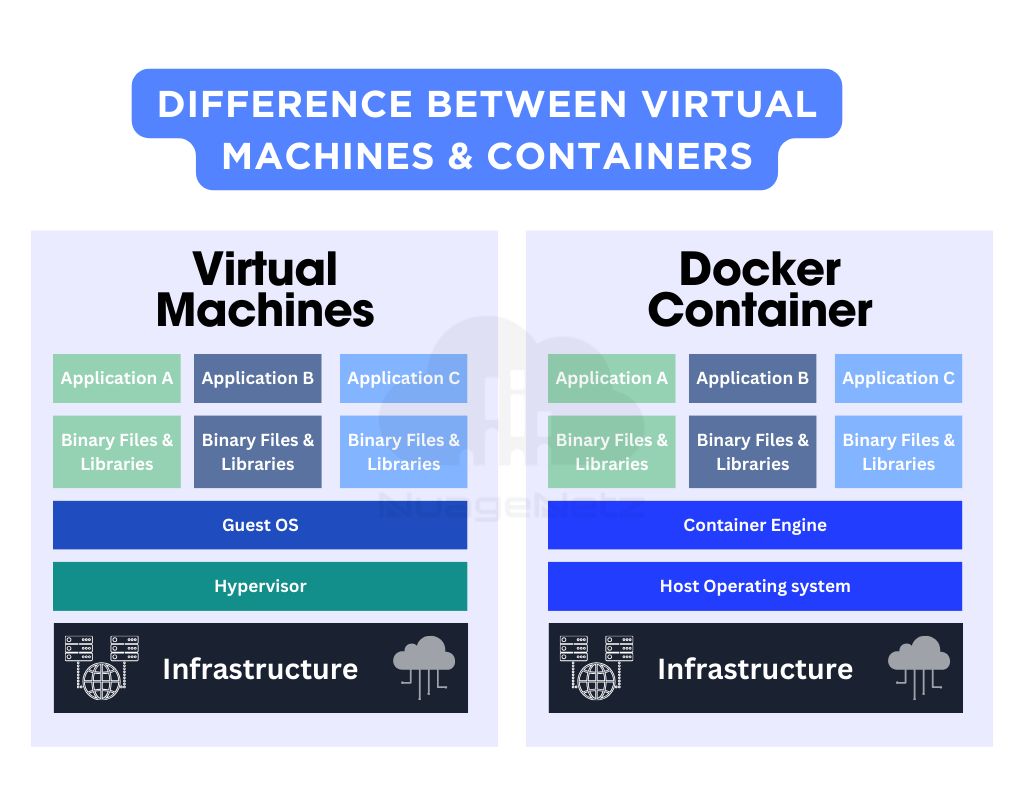
Virtual Machines (VMs) and Containers are both technologies used for virtualization, but they have distinct differences. Here’s a detailed comparison:
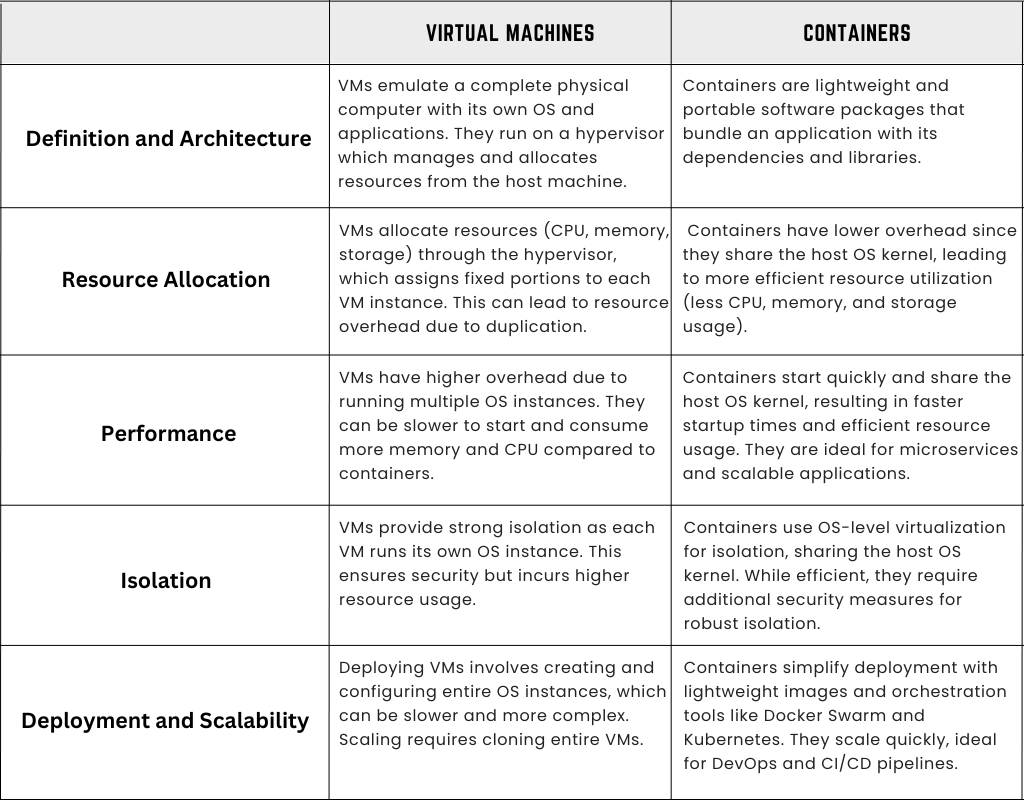
Conclusion:
Containerization is a lightweight form of virtualization that involves encapsulating an application and its dependencies into a single, portable unit called a container. This container includes everything the application needs to run, such as the code, runtime, libraries, and system tools. Containers are designed to be consistent across different environments, ensuring that an application runs identically regardless of where it is deployed.
About Us
NuageNetz IT Services Pvt. Ltd. is a cutting-edge IT company that specializes in Cloud Computing, Web Development, DevOps and Agile Methodologies. Our team of skilled professionals is dedicated to providing exceptional services to our clients using the latest technologies and tools
Got Something to say about our Blog?
Have something to say? Drop your thoughts, feedback, or questions in the comments below!
